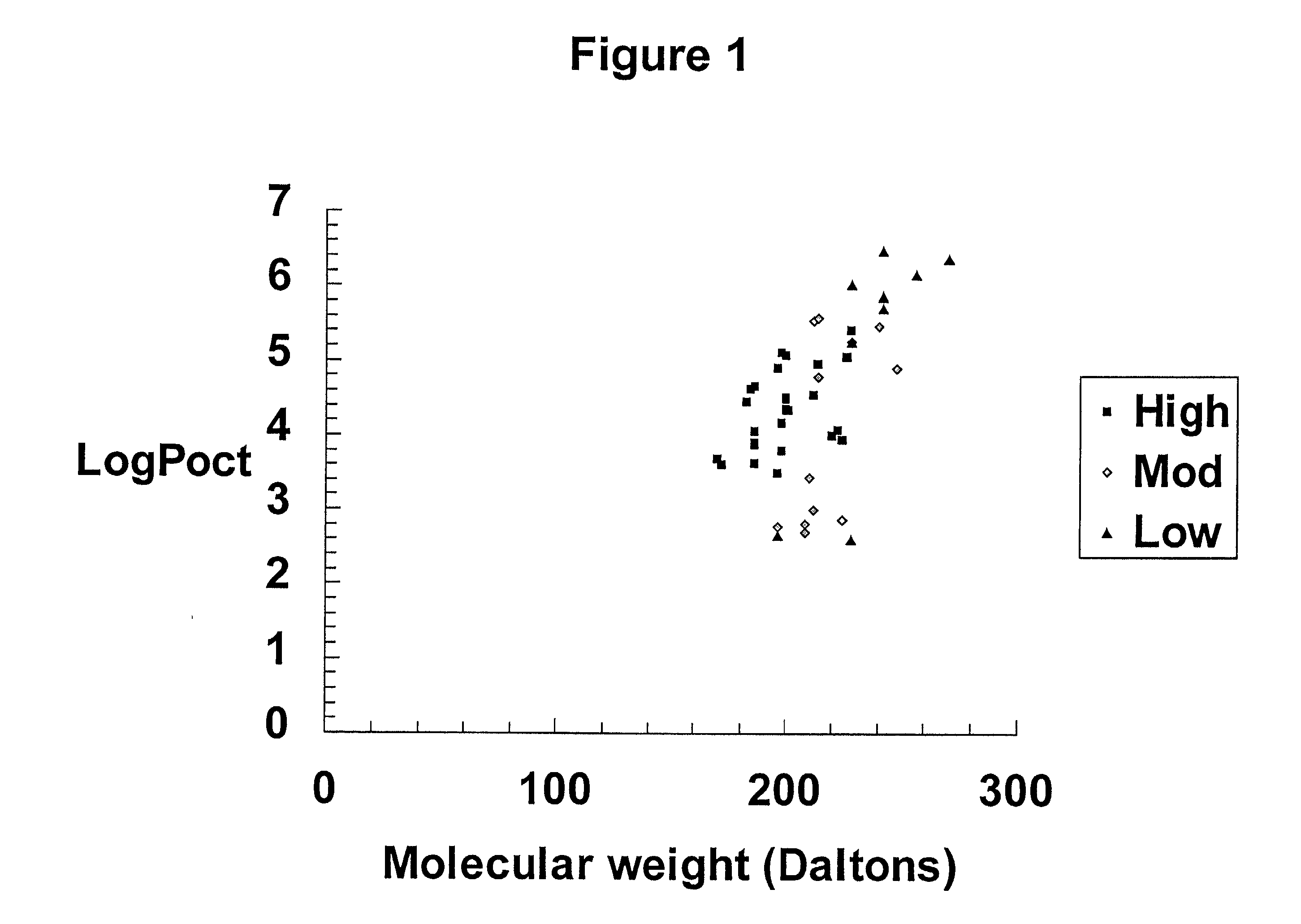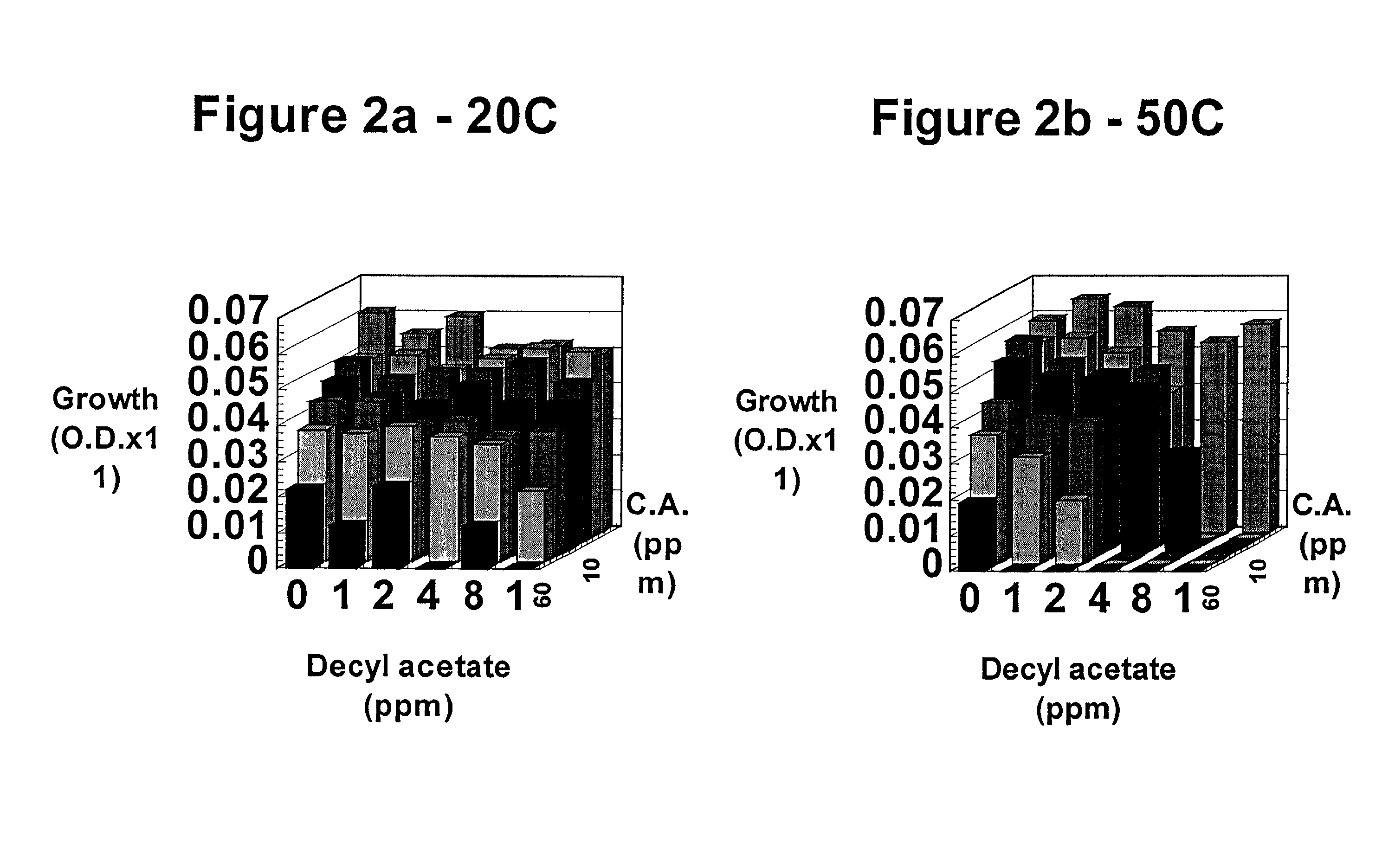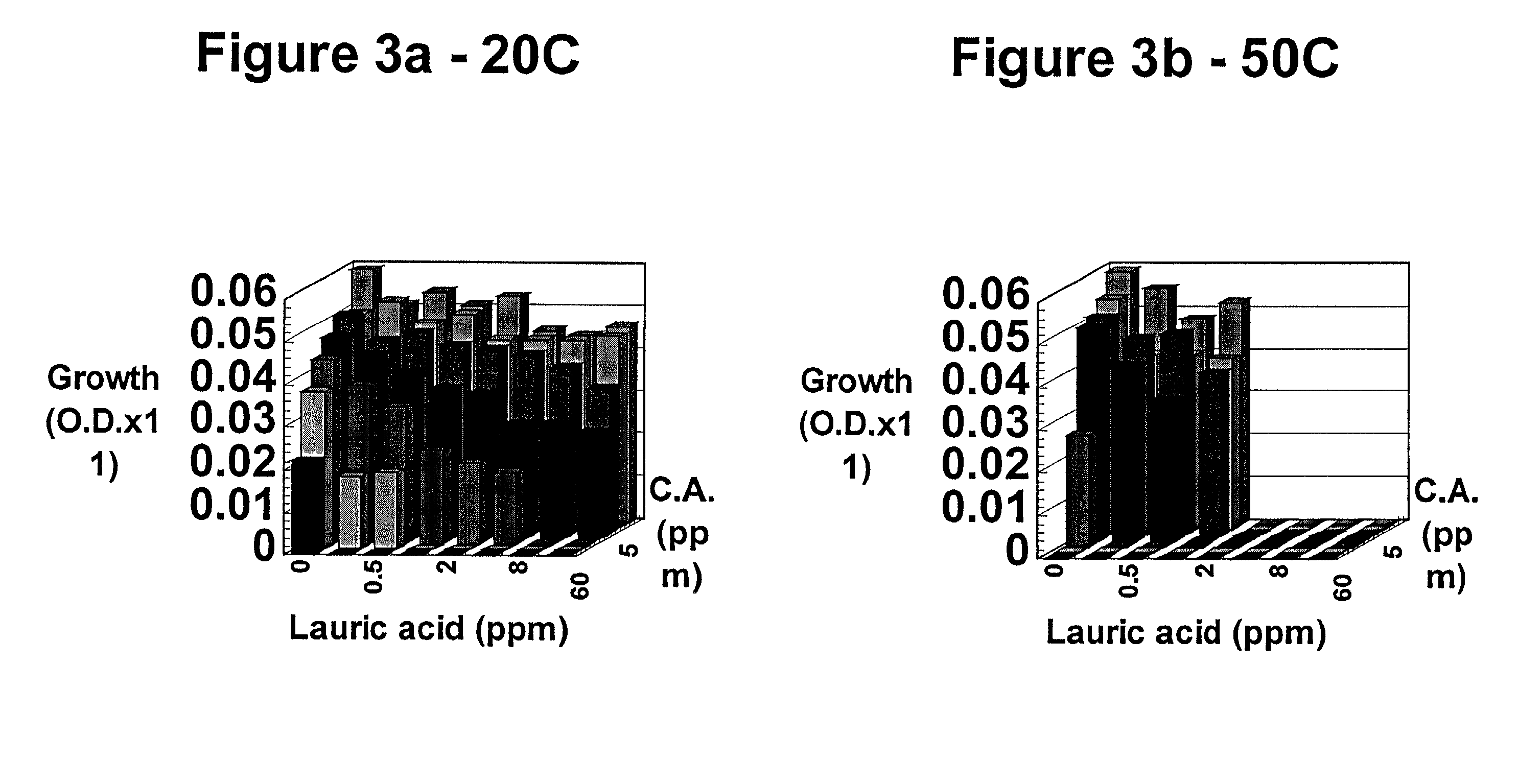Ambient stable beverage
a stable beverage and stable technology, applied in the field of ambient stable beverages, can solve the problems of affecting the flavour affecting the taste and consuming a lot of time, so as to achieve the effect of reducing the amount of oxygen and reducing the mineral content of a tea based beverag
- Summary
- Abstract
- Description
- Claims
- Application Information
AI Technical Summary
Benefits of technology
Problems solved by technology
Method used
Image
Examples
example 2
[0105] Synthetic Soft Drink Experiments
[0106] FIGS. 18a / b show the effect of pasteurisation adjunct, decyl acetate, in combination with essential oil components, citral dimethyl acetal and cumic alcohol, applied in synthetic soft drink, in combination with the preservative, cinnamic acid. Synthetic soft drink contained glucose, 8%w / v, citric acid 3 g / l, potassium orthophosphate 1 g / l, magnesium chloride 0.1 g / g and yeast extract 0.1 g / l. Each matrix of 30 ml tubes containing 10 ml synthetic soft drink, pH 3.4, all contained 25 ppm citral dimethyl acetal, 35 ppm cumic alcohol, decyl acetate 0-12 ppm and cinnamic acid 0-60 ppm. Tubes were equilibrated at the required temperature for 7 minutes in a water bath, before inoculation with 10.sup.4 cells / ml of the yeast Saccharomyces cerevisiae X2180-1B. Tubes were held at temperature for 2 minutes before being cooled rapidly in cold water for 5 minutes. Tubes were then incubated for 14 days at 25.degree. C. to allow surviving yeasts to grow...
example 3
[0110] Sorbic Acid and Benzoic Acid Experiments
[0111] FIGS. 20a / b show the effect of pasteurisation adjunct, decyl acetate, in combination with essential oil components, citral dimethyl acetal and cumic alcohol, applied in Ready to Drink tea, 0.14% tea, in combination with the preservative, sorbic acid. Each matrix of 30 ml tubes containing 10 ml RTD tea, pH 3.4, all contained 25 ppm citral dimethyl acetal, 35 ppm cumic alcohol, decyl acetate 0-12 ppm and sorbic acid 0-150 ppm. Tubes were equilibrated at the required temperature for 7 minutes in a water bath, before inoculation with 10.sup.4 cells / ml of the yeast Saccharomyces cerevisiae X2180-1B. Tubes were held at temperature for 2 minutes before being cooled rapidly in cold water for 5 minutes. Tubes were then incubated for 14 days at 25.degree. C. to allow surviving yeasts to grow out. At 14 days growth was measured by optical density at 600 nm in x11 diluted samples.
[0112] Heat+pasteurisation adjunct showed a remarkable combine...
example 4
[0115] Various Pasteurisation Adjuncts Experiments
[0116] FIGS. 22a / b show the effect of various pasteurisation adjuncts applied at 0-100 ppm in synthetic soft drink, zero tea content. Synthetic soft drink contained glucose, 8%w / v, citric acid 3 / l, potassium orthophosphate 1 g / l, magnesium chloride 0.1 g / g and yeast extract 0.1 g / l. Rows of 30 ml tubes containing 10 ml synthetic soft drink, pH 3.4, were equilibrated at the required temperature for 7 minutes in a water bath, before inoculation with 10.sup.4 cells / ml of the yeast Saccharomyces cerevisiae X2180-1B. Tubes were held at temperature for 2 minutes before being cooled rapidly in cold water for 5 minutes. Tubes were then incubated for 14 days at 25.degree. C. to allow surviving yeasts to grow out. At 14 days growth was measured by optical density at 600 nm in x11 diluted samples. The pasteurisation adjuncts had little effect at low temperature on yeast growth.
[0117] 50.degree. C. temperature+pasteurisation adjuncts showed a r...
PUM
 Login to View More
Login to View More Abstract
Description
Claims
Application Information
 Login to View More
Login to View More - R&D
- Intellectual Property
- Life Sciences
- Materials
- Tech Scout
- Unparalleled Data Quality
- Higher Quality Content
- 60% Fewer Hallucinations
Browse by: Latest US Patents, China's latest patents, Technical Efficacy Thesaurus, Application Domain, Technology Topic, Popular Technical Reports.
© 2025 PatSnap. All rights reserved.Legal|Privacy policy|Modern Slavery Act Transparency Statement|Sitemap|About US| Contact US: help@patsnap.com



